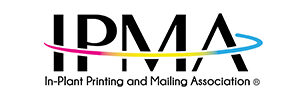Before we get too far down the road, I want to remind you that each of you are leaders, and, as such, you have been down this path before. Though most of us were not around in the previous pandemics (Black Plague, Spanish Flu) and did not live through the “Dust Bowl” or the “Great Depression,” we did push through the “Great Recession.” So yes, in a sense we have been here before. We need to remember when we took over managing operations, how we made changes, worked with others to discover new methods of production, increased production without increasing labor, invested in technology, and invested in people.
Once Rome was the center of everything: leadership, religion, commerce. Hence “All Roads lead to Rome,” which said it all. I suggest a different guiding principle: “There is more than one Road to Paragould,” meaning there are many different ways to achieve your goals, open your mind, and be open to other’s suggestions. Take the road less traveled. You will have the confidence to know which road to take at the crossroads.

Crossroads. Global change, Market Swings, Supply Chain shortages, paper and materials shortages, Transportation issues, remote working, communication. Transition…transition…transition. What is our message? Our purpose? What can we do, when can we do it, and are we managing or coping? These questions are running through my mind daily if not nightly. As we begin a Global Recovery, are we relevant? Our world as printers is communication, more than ever, one of if not the best means of sharing, disseminating information and knowledge with others.
We have the ability to combine digital technologies (variable data, Augmented Reality, QR Codes) with printed media, enabling us to drive digital interfacing and customer or personal interacting as increasing buying decisions, website utilization for order placing, inquiries, additional information, and services. We call this driving Customer Engagement to and for our customers’ clients. Did you just think we printed to “make it look pretty” as my grandmother would say while walking through our newspaper? (Though that is important too.)
Yet, here we stand at that Crossroads. We are enjoying a recovery period from the Covid-19 pandemic yet we seem to be flush with business we have issues to be addressed and still we have to make, take control or our future, update our costs and pricing; engage our staff for greater efficiencies; reduce waste and upgrade your equipment, invest in technology. Each of these are important, now possibly a year from now, possibly years from now. Return to basic management activities to gain focus and then able to choose your road to success. Now is the time to return to 101 Management Principles: Planning, Organizing, Actualizing, Reviewing – repeat until you have it right. Printing operations are not an island. We are not alone. We are a key proponent that contributes to our local, regional, national and often global communities, for as we all know, the world is not as big as it was 50 years go.
Revisit your costs. Your pricing (materials, supplies, paper, labor) are increasing … seems like every day we have another increase. No doubt the “snowball effect” at play. Mills lag behind making paper, transportation lags impacting delivery, parts and supplies — same story, labor shortage– yes this is driving some inflation as well. This is not just in printing: this is industry wide, worldwide truly Global! I can’t think of any industry segment that is immune to the impact. Remember, now is not the time for predatory pricing, but we do have an opportunity to correct pricing to more accurately reflect our costs and decide, as an industry, to move forward and quit “buying market” with the below “cost” pricing that we have suffered from for eons. The Great Recession forced many closures of in-plant printing and commercial printing operations. And we saw a great deal of consolidation at the same time. Not taking the corrective action now, we will see a repeat of closures and consolidation. Be smart. Stabilize your pricing policy and shorten your billing times, change your inventory practices, greatly shorten your re-order points and educate your customers.
Review your business operations plan. Include techniques such as Continuous Improvement, Lean Management, Six Sigma, because now is the time to reduce operational costs, gain efficiencies, and reduce waste. This will increase productivity, and, therefore, enhance profitability. Work with your team members to be diverse and inclusive in their thinking. Seek to work with suppliers that, like you, are planning and seeking better solutions. Increase your partnerships with your vendors, staff, and customers.
Review your market and what you do best. Be aggressive in marketing those services, but also fit the needs of your clients. Do not repeat the mistake of the last 20 plus years by allowing marketers and others to continue the lie “Print is Dead.” It never was, and is not now. There is a demand for printing. People want mail. All generations want printed products because they have higher trust factors. Direct mail stays in homes for 15 days, and mail with QR Codes and Augmented Reality allows direct links to websites for more information, order placing, etc. Overall, for the last 13 years the mailing industry has seen a decline: First class mail average decline FY21 – 9.2%. However, “marketing or direct” mail increased 3.1% in FY21.
Marketing mail outperforms digital, e-marketing and social media combined by 9%. We need to let our clients know that if they want improved visibility and increased market share, then they need to use marketing mail to drive their customers to action and to their webpages. Currently, marketers and clients are utilizing postcards to tease and tickle the market. Combined with QR Codes, they can drive more traffic to websites for more detail economically. Join the battle to save your customer. To save yourself, promote printing brochures, flyers, postcards, and use marketing mail. Provide facts and figures that illustrate how your customer will improve their ROI. These are easy to come by. Look online and use sources such as Printing United, Mailing System Technology, What They Think or organizations such as the In-plant Printing and Mailing Association.
Work with your vendors more. Plan your future needs. Include your vendors, and work together to build mechanisms that allow you to have better control and be less reactionary. Many vendors are forced to work with customers who have long-term relationships and do not have the resources to take on new customers, so it is in everyone’s best interest to work together. Be sure to include your customers in your planning and needs assessment so they to have more confidence and not be caught unawares. Be prepared to offer alternatives: changing finishes, colors, weights, sizes or even format. Be attentive and engaged at every opportunity. In the end, you are moving forward.
Be mindful of supply chain issues and be proactive. Procure in advance and warehouse known commodities for future orders. Review your re-order points and possibly consider modifying the trigger points to allow an additional 30 to 60 days. Monitor global impacts such as manufacturing and shipping delays and barriers such as what is ongoing in China. Pay close attention to other details such as cash flow, fuel, labor stress, repairs and updating equipment.
Your clients are addressing the same issues as I have mentioned here– just different names, different tunes. They have the same needs to continue to move forward, and to contact their customers with confidence and dependability. They are at the same crossroads, trying to make the same decisions. Your leadership here and now, the decisions you make by engaging with staff, vendors and customers, continuous improvement, utilizing basic management principles that you build your relationships with will carry you, your vendors, and your clients to a successful return to normalcy. Which road you take depends on where you want to go, how fast you want to get there, and if you are going to be a trailblazer, follower, or one too late to the dance.
Part of managing is being attentive, being diligent, vigilant and aggressive. Now is not the time to sit back and wait. Now is not the time not to invest into your future, your customer’s future. Be aggressive in reducing operational costs and waste. Know your market. Know your team. Build on those areas and those customers that are profitable. Look at your operation, your offerings, and needs of your clients, especially before you choose which road you take. Plan, organize, actuate, review, repeat. The better you do this process, the faster you will have success. Sit back and you may just fade away.
Our business life can be slow, arduous, tedious and yet fulfilling. The procession of the saints annually to Rome was the same, “take two steps forward and take one step backward”. One can imagine how long this procession took, and yet each was fulfilled in the journey. Our travel down this road of recovery using technology and developing new services will, in many ways, be just as hard, slow, and yes, with some setbacks. But you have to keep moving forward. Dust off your management knowledge, skills, and energy. Be engaged. Be engaging!
John Yerger will be presenting “The value of Idealalliance G7 profile color management to your operation, customers and staff.” at IPMA’s 2022 Educational Conference June 12-16, 2022 in Buffalo, NY. In this talk, John discusses why and how the University of Nebraska-Lincoln chose to become a G7 profile house for offset, digital and wide format processes.

John Yerger was born into printing and has served in almost every position from a printer’s devil to owner. He has a BS in Communications Printing Management and in senior management in private sector print operations and three different higher education in-plant operations. John has directed operations with digital, wide format, graphic design, offset, letterpress, flexography and mail centers managing upwards of 70 staff and mulit-million dollar budgets.
